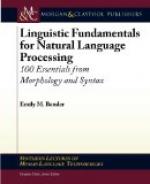Every boy who has played at ball has observed these principles. He throws his ball, which, if not counteracted, will continue in a straight line, ad infinitum—without end. But the air impedes its progress, and gravitation brings it to the ground. When he throws it against a hard substance, its velocity is not only overcome, but it is sent back with great force. But if he takes a ball of wax, of snow, or any strong adhesive substance, it will not bound. How shall we account to him for this difference? He did the same with both balls. The impetus given the one was as great as the other, and the resistance of the intervening substance was as great in one case as the other; and yet, one bounds and rebounds, while the other sticks fast as a friend, to the first object it meets. The cause of this difference is to be sought for in the different capabilities of the respective balls. One possesses a strong elastic and repelling power; in the other, the attraction of cohesion is predominant.
Take another example. Let two substances of equal size and form, the one made of lead, the other of cork, be put upon the surface of a cistern of water. The external circumstances are the same, but the effects are widely different—one sinks, the other floats. We must look for the cause of this difference, not in the opposite qualities of surrounding matter, but in the things themselves. If you add to the cork another quality possessed by the lead, and give it the same form, size, and weight, it will as readily sink to the bottom. But this last property is possessed in different degrees by the two bodies, and hence, while the one floats upon the water, the other displaces its particles and sinks to the bottom. You may take another substance; say the mountain ebony, which is heavier than water, but lighter than lead, and immerse it in the water; it will not sink with the rapidity of lead, because its inherent power is not so strong.
Take still another case. Let two balls, suspended on strings, be equally, or, to use the technical term, positively electrified. Bring them within a certain distance, and they will repel each other. Let the electric fluid be extracted from one, and the other will attract it. Before, they were as enemies; now they embrace as friends. The magnet furnishes the most striking proof in favor of the theory we are laboring to establish. Let one of sufficient power be let down within the proper distance, it will overcome the power of gravitation, and attract the heavy steel to itself. What is the cause of this wonderful fact? Who can account for it? Who can trace out the hidden cause; the “primum mobile” of the Ptolmaic philosophy—the secret spring of motion? But who will dare deny that such effects do exist, and that they are produced by an efficient cause? Or who will descend into the still more dark and perplexing mazes of neuter verb grammars, and deny that matter has such a power to act?




